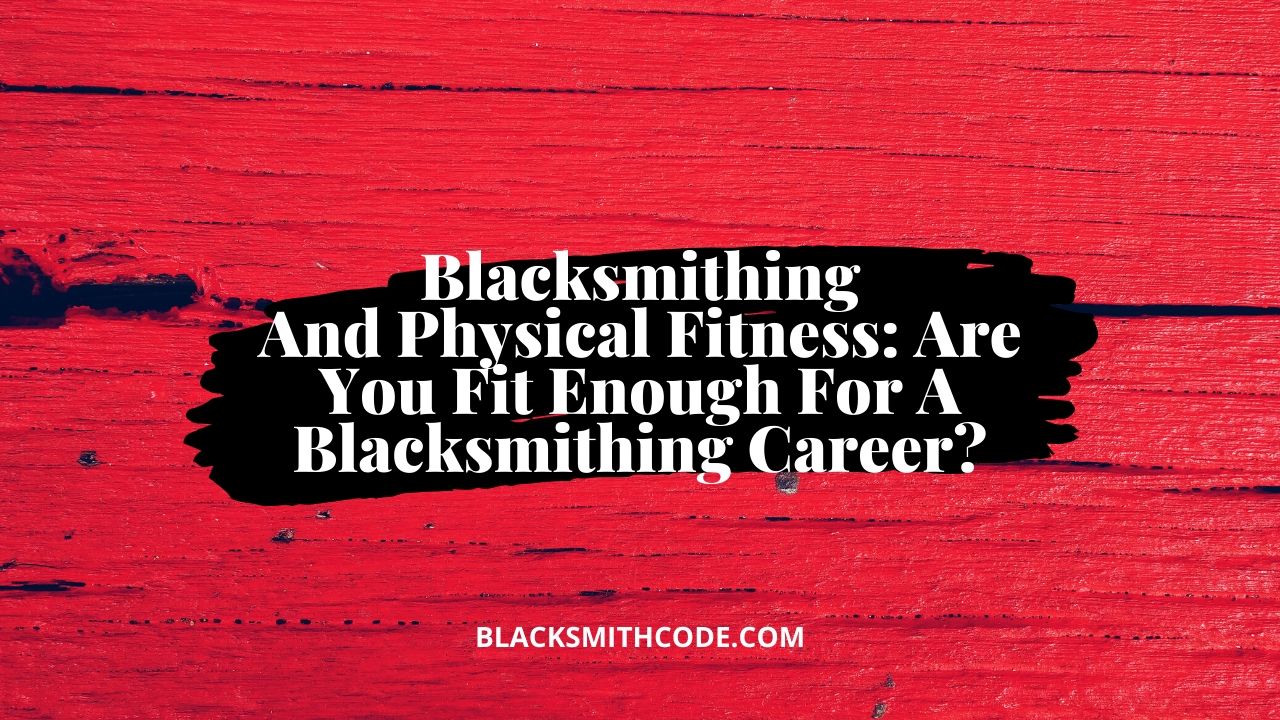Just how strong and physically fit do you have to be to become a successful blacksmith? Find out about blacksmith fitness.
We all imagine blacksmithing to be a tedious and strenuous task where you have to carry heavy metal, deliver strong hammer blows and grapple with heat while gasping for air in an otherwise stuffy and dirty forge. Surely, we imagine, this is not a craft for the weakling!
That might have been true centuries ago but modern blacksmithing has a lot to do with the smith’s stamina than with raw strength and power. You don’t necessarily have to be a strong hulking person to get the job done.
Even with repeated light hammer blows, it is possible to forge the metal into shape. As a blacksmith, you should aim at applying just the right amount of force and at the right spot in order to deform the metal to the right desired amount. However, working with bigger bars will require a lot more force in order to deform the metal.
Hammer Sizes
As a blacksmith, you will need a selection of hammers that should range in size between 2 pounds and 4 pounds. Pick the hammer sizes depending on the blacksmith fitness. If you feel you don’t have sufficient strength, go for the lighter hammers. It will still do the job. Your endurance and the hammer accuracy, rather than the weight of the hammer, will make a much bigger difference on how successfully you move metal. Additionally, when you start by overdoing the hammer weight, you are likely to suffer from muscle and tendon damage. When it comes to hammer selection, start small and then increase the weight gradually depending on your comfort level.
Also, when it comes to blacksmithing, think more about your technique than the hammer weight. Your mind should be focused more on the design of the product and how you will handle the steel.
The Ergonomics of Blacksmithing
Blacksmithing is still a tedious physical task that will involve standing in the forge for long durations of time. There is the ergonomics of hammer handling and movement. You will be swinging a 2 pound or a 4-pound hammer multiple times a day although there will be lots of intermittent periods of rest as the metal heats. In forging a metal, roughly 50% of your time will be spent hammering and roughly 50% will be spent resting. That gives you sufficient time to recuperate and regain required blacksmith fitness to work the metal.
If you are starting and still aren’t used to this, start with a small bar that is easy to manipulate. You can then gradually move to larger projects that involve heavier metal pieces and require more strength. By doing smaller projects repeatedly, you will develop the fitness and the endurance necessary to handle bigger projects.
Pro Tip
In much bigger projects, you won’t even have to do stuff by hand. You will, for example, use cranes and hoists to move the metal around the forge. You can also use power hammers to manipulate the steel instead of grappling with heavier hammers.
Blacksmithing might not be ideal for you if you have previous ailments like tennis elbow, carpal tunnel or even a rotator cuff injury on the dominant side as the smithing work is likely to flare up these conditions.
The Ergonomics of Hammer Handling
Since a lot of the physical work will entail working with hammer, adopt the following best practices when it comes to hammer control to aid blacksmith fitness: –
1. Use the hammer without choking the handle.
2. Allow the hammer to rebound when hitting the metal.
3. Have the anvil set to the knuckle height.
4. Use the entire arm and should in your hammer strokes instead of just the forearm.
Good ergonomics will enable you to avoid injuries.
Additional Skills Sets That You Need to Become a Better Blacksmith:
1. You should be willing to experiment
2. Learn and research often to improve your skills and blacksmith fitness
3. Practice on your weak points repeatedly to fine-tune them
4. Note down and learn from past mistakes
5. Develop a good hand-and-eye coordination
6. Learn to use the resources that you have to solve problems
7. Get used to the hot metal. Hot metal will be an integral part of all your blacksmithing projects.
8. Give it time and work on blacksmith fitness.

